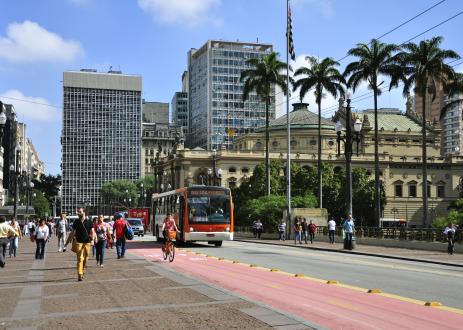Quantifying the Grid Impacts from Large Adoption of Electric Vehicles in China
Synthesizing results from WRI China’s EV-Grid Simulator, this report analyzes the grid impacts of different types of EV charging within two Chinese cities and recommends the use of VGI measures to defer costly grid capacity expansions.

As the global frontrunner in plug-in electric vehicle (PEV) adoption, China can expect increasing impacts on its electrical grid as the uptake in PEVs and fast charging infrastructure continues to accelerate.
Employing WRI China's EV-Grid Simulator, this report analyzes the impact of increased EV uptake and different charging strategies on the electrical grid in Beijing and Suzhou both on the transmission level and the distribution level. The analysis’ Business-as-usual (BAU) and High-impact scenarios estimate increases in peak load depending on PEV uptake and charging behaviors (such as charging powers and frequencies).
Through Monte Carlo Simulation and Linear Programming, the analysis determines whether negative impacts to the grid can be minimized through Vehicle-Grid Integration (VGI) measures, such as managed charging and vehicle-to-grid (V2G). Results demonstrate that VGI measures could successfully mitigate peak load increases and potential defer costly grid capacity expansions.
Key Findings
- At the city level in the BAU scenario, PEV stock is within 4.5 million by 2050, and most PEVs rely on slow charging. This results in a peak load increase of 1-5%, within existing infrastructure capabilities.
- At the city level in the High-impact scenario, PEV stock is over 4.5 million by 2050, and most PEVs utilize fast charging. Peak loads would increase by nearly 12%, possibly overwhelming the existing generation and transmission infrastructure.
- At the distribution scale, the electrification of 50% of private vehicles will result in transformer overload.
- V2G is most effective at shaving local peak loads, while controlled charging is ideal to optimize PEV’s charging loads.
- A time-of-use (TOU) tariff may reduce peak loads, but its impact is limited as it may shift demand to the beginning of the off-peak period and create another load spike.
- Despite V2G being the most effective strategy, its technical, regulatory, and public acceptance barriers will inhibit its widespread use in the near-term.
- Controlled charging is seen as the most viable approach in the near-term to mitigate the negative impacts of PEV uptake on the electrical grid.
Projects
-

Electric Mobility
Visit ProjectIncreasing access to electric vehicles and charging infrastructure, and optimizing to reduce emissions.
Part of Cities -

Urban Mobility
Visit ProjectImproving quality of life, health and opportunity in cities through sustainable and safe transport and urban design.
Part of Cities -

Electric Vehicle-Grid Integration
Visit ProjectEnabling solutions for low-cost, equitable and clean EV public charging networks in cities globally.
Part of Cities



